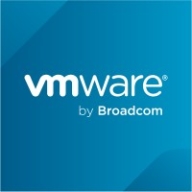

VMware vSAN and Red Hat Hyperconverged Infrastructure compete in the hyper-converged infrastructure market with distinct advantages depending on organizational needs. VMware vSAN has an edge in features, while Red Hat Hyperconverged Infrastructure excels in flexibility and technology integration, potentially making it a superior choice for some environments.
Features: VMware vSAN offers seamless integration within the VMware ecosystem, comprehensive storage functionalities, and optimized management for VMware environments. It is ideal for organizations heavily invested in VMware technologies. Red Hat Hyperconverged Infrastructure leverages its open-source nature, allowing extensive customization and integration with a wide array of software ecosystems, catering to enterprises with diverse IT landscapes.
Room for Improvement: VMware vSAN can enhance its flexibility across non-VMware environments and improve ease of deployment for those unfamiliar with VMware ecosystems. It could also benefit from more competitive pricing. Red Hat Hyperconverged Infrastructure could improve by simplifying its deployment process, tightening integration with legacy systems, and expanding its support resources to match the scale and scope of closed-source competitors.
Ease of Deployment and Customer Service: VMware vSAN integrates smoothly within VMware environments, providing a streamlined deployment process with extensive support resources. Red Hat Hyperconverged Infrastructure offers a more adaptable but potentially complex deployment, supported by Red Hat's community support and documentation. While VMware vSAN enables a straightforward setup for VMware users, Red Hat's comprehensive support aids in managing complex, custom environments.
Pricing and ROI: VMware vSAN typically involves a higher upfront cost but provides significant ROI in VMware-centric data centers due to its seamless integration. Red Hat Hyperconverged Infrastructure offers a more appealing cost-to-value ratio for those utilizing open-source solutions, leading to competitive ROI, particularly in environments exploiting its flexibility to reduce licensing expenses.
| Product | Market Share (%) |
|---|---|
| VMware vSAN | 13.9% |
| Red Hat Hyperconverged Infrastructure | 0.9% |
| Other | 85.2% |

| Company Size | Count |
|---|---|
| Small Business | 1 |
| Large Enterprise | 6 |
| Company Size | Count |
|---|---|
| Small Business | 98 |
| Midsize Enterprise | 58 |
| Large Enterprise | 128 |
Red Hat Hyperconverged Infrastructure - based on our leading OpenStack and virtualization platforms - provides co-located, scalable, software-defined compute and storage, driven by Red Hat Ansible Automation on economical, industry-standard hardware.
VMware vSAN is a software-defined storage product that is used in collaboration with VMware ESXi hypervisor and that provisions and manages storage based on policies, regardless of the underlying hardware. The solution enables you to prime your business for growth through its seamless evolution (it is integrated with vSphere and requires no new tools), its flexibility, and its multi-cloud capabilities. As an industry-leading software, VMware vSAN provides high levels of performance with minimal impact on CPU and memory.
VMware vSAN Features
VMware vSAN has many valuable key features. Some of the most useful ones include:
VMware vSAN Benefits
There are many benefits to implementing VMware vSAN. Some of the biggest advantages the solution offers include:
Reviews from Real Users
Below are some reviews and helpful feedback written by PeerSpot users currently using the VMware vSAN solution.
PeerSpot user Yves S., CEO, Cloud Evangelist at Comdivision Consulting GmbH, says, “vSAN gives us a lot of advantages when we need to expand resources. We have an overall larger host infrastructure, and we split that up for specific customer test and use cases. In that specific scenario, we can easily add more hosts or reduce the number of hosts in the environment.”
A reviewer who works in Infrastructure Security explains, “The ease of use is great. The initial setup and upgrade process was pretty straightforward. And, technical support is great.”
Laurent N., Director at Softlogic, comments, "The feature that I have found most valuable is that it is easy to deploy. It is easy to create and delete virtual servers. It is easy to create the load balancing and the clustering."
We monitor all HCI reviews to prevent fraudulent reviews and keep review quality high. We do not post reviews by company employees or direct competitors. We validate each review for authenticity via cross-reference with LinkedIn, and personal follow-up with the reviewer when necessary.